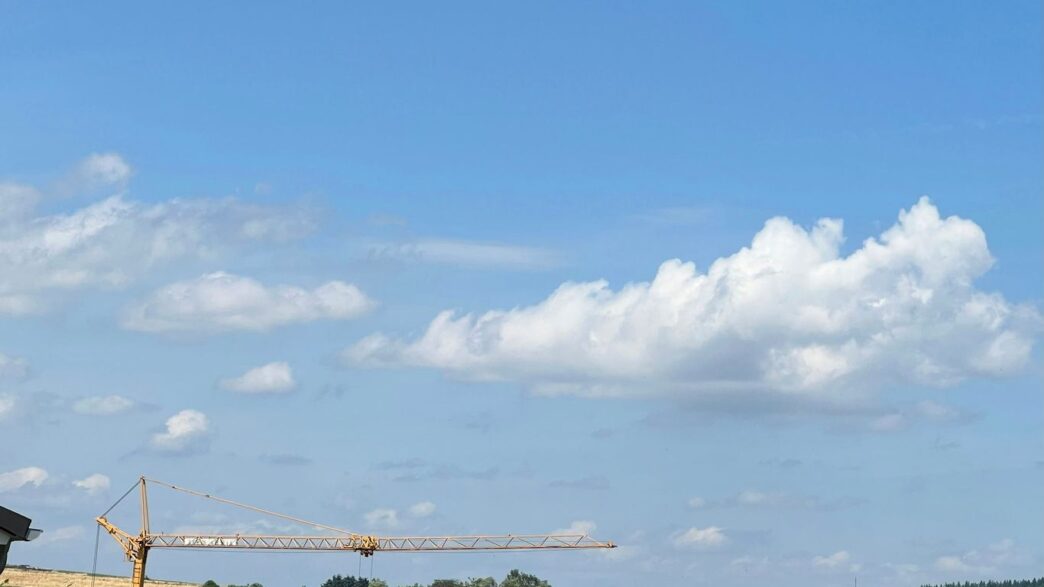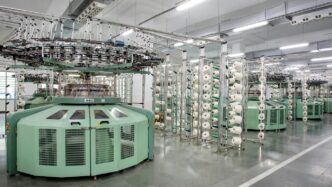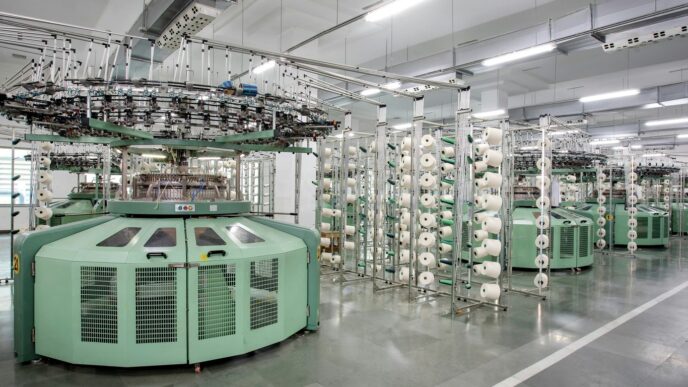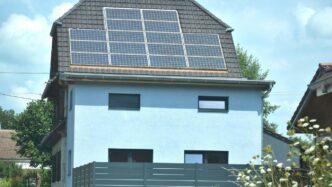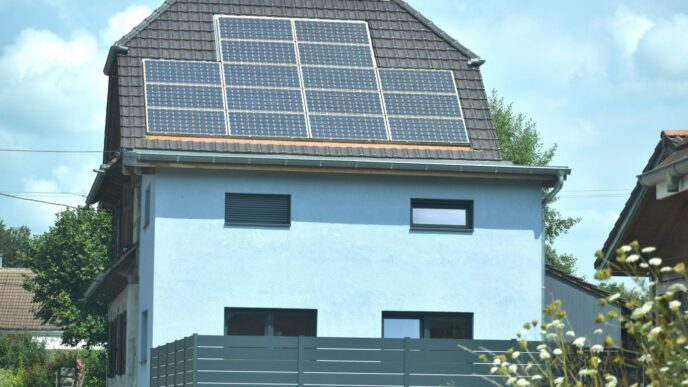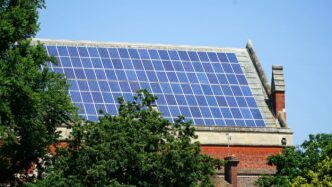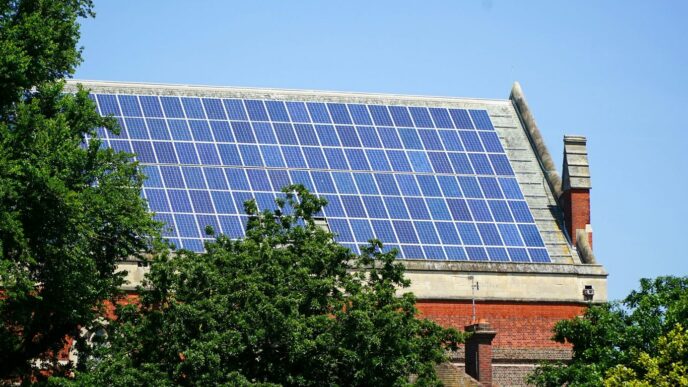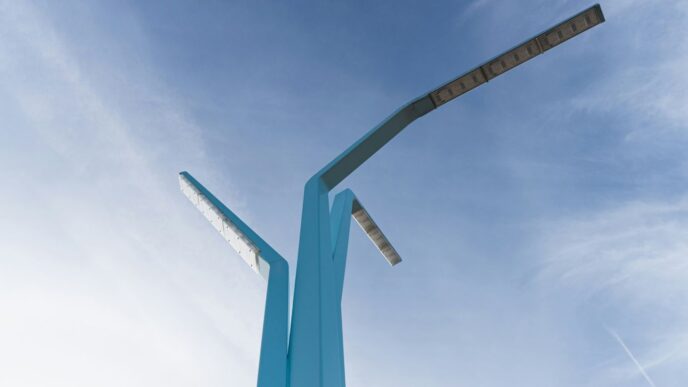Duke Renewables is making big moves in the clean energy space as we head into 2025. The company is working on lots of new projects, from wind and solar to new battery storage and even hydrogen. Their goal is to cut carbon emissions and help communities at the same time. With new plans rolling out across the Carolinas and a focus on both technology and people, Duke Renewables is trying to balance growth, environmental goals, and the needs of the folks who rely on their power. Let’s look at how they’re doing it.
Key Takeaways
- Duke Renewables is aiming for at least a 50% cut in carbon emissions by 2030 and net-zero by 2050, with plans to grow renewable energy capacity to 16,000 megawatts by 2025.
- They’re investing in new tech like advanced batteries, grid upgrades, and exploring hydrogen and zero-emission plants to keep up with rising energy demand.
- The company is rolling out major resource plans in the Carolinas, combining utilities to save customers money and support job growth in the region.
- Duke Renewables is using green bonds and a new investment framework to attract funding for clean energy, while staying aligned with ESG (environmental, social, and governance) goals.
- There’s a strong focus on community impact—creating jobs, supporting diverse suppliers, and making sure the clean energy transition is fair and benefits everyone.
Duke Renewables and the Clean Energy Movement

Duke Energy is right in the middle of the clean power shift that a lot of people talk about these days. Maybe you’ve seen their name come up in stories about solar farms or new wind projects. In 2025, they’re doubling down on some big goals—most of them have deadlines already set. What stands out is how they’re trying to balance cutting emissions, making business sense, and helping local people at the same time. Here’s how they’re approaching it so far:
Ambitious Emissions Reduction Goals
Duke Renewables has set some pretty serious targets for lowering greenhouse gases. Here are the basics, in plain numbers:
| Target | Deadline |
|---|---|
| 50% CO2 cut (from 2005) | 2030 |
| Net-zero electricity carbon emissions | 2050 |
| Net-zero methane emissions (gas business) | 2030 |
It’s not all talk, either. They’re making these reductions mostly by building new solar, investing in wind, and trying to retire older fossil-fueled plants. Every year, they publish updates showing how much progress they’re making, and so far, things are headed in the right direction.
Net-Zero Strategies for 2030 and Beyond
So how are they planning to get to net zero? Some of it is the usual—more renewable projects, fewer coal plants. But there’s more to it:
- Building out battery storage, so solar and wind energy can be used after dark or on calm days.
- Upgrading the power grid so it can handle lots of different types of energy.
- Trying out new technology, like hydrogen power and advanced nuclear, since solar and wind alone might not be enough.
- Putting money into research projects about capturing carbon from smokestacks—though this part still seems up in the air.
Duke admits that getting all the way to net-zero won’t be easy. They’re betting that a combination of known fixes and new tech will get the job done.
Focusing on Community and Social Impact
It’s not just about kilowatts and carbon, though. Part of Duke’s clean energy plan is making things better for the people in its service areas. That means:
- Bringing in new jobs, especially in places where old coal plants are shutting down.
- Working with a wider variety of suppliers—so small and minority-owned companies get a piece of the action.
- Trying to keep energy affordable, since big upgrades can mean higher monthly bills if they’re not careful.
- Making sure changes to the grid don’t leave rural people or low-income homes behind.
They also talk a lot about education and job training, so folks don’t get left out while the energy world changes around them. Most people want clean air, but they also want steady work and reliable power. Duke seems pretty aware of both sides.
In short, Duke Renewables is facing one of the biggest industry shake-ups in years, and they’re trying to hit tough climate goals while also remembering who their customers are. It’s a huge job, and 2025 is shaping up to be a make-or-break year.
Innovative Technologies Powering Duke Renewables

Duke Energy isn’t just saying they want a cleaner future—they’re actually rolling out some wild technologies to make it real. Over the past year, you can see their focus shifting from traditional power sources to smarter, low-carbon solutions. It’s pretty cool stuff, honestly. They’re not just investing in solar and wind; the company is betting big on storage, hydrogen, and other tech that a decade ago felt like science fiction.
Expanding Renewable Energy Portfolio
Duke’s renewable energy projects stretch across several states and are growing almost faster than you can keep up. It’s not just about putting up solar panels or wind turbines randomly. Here’s what they’re doing:
- Solar: Tons of new solar farms are popping up—both company-owned and third-party deals. Duke is on track to hit 16,000 megawatts of renewables by the end of 2025.
- Wind: Besides solar, wind power in the Midwest and Carolinas has seen a boost.
- Community Projects: There’s a noticeable push for smaller-scale, local renewables so neighborhoods can get in on clean power too.
Duke Energy is building one of the largest renewable portfolios in the country, changing how power is produced and consumed everywhere they operate.
Advanced Grid and Battery Storage Enhancements
A lot of people don’t realize that the grid—the system that gets electricity from place to place—is just as important as the power plants themselves. Duke is pouring money into improving this backbone. The real game-changers here:
- Large-scale battery storage: These batteries keep solar and wind power available even when the sun isn’t shining or the wind isn’t blowing.
- Smart grid upgrades: More sensors and automated controls mean they can spot outages faster and keep the lights on for more people, more of the time.
- Microgrid pilots: Duke is testing smaller grids that can run on their own if there’s a problem with the main system. Hospitals, schools, and first responders stand to benefit most from this.
Battery Storage Growth (2024-2025)
| Metric | 2024 | 2025 (Projected) |
|---|---|---|
| Installed Capacity (MW) | 400 | 700 |
| New Storage Projects | 8 | 14 |
| Largest Site Size (MW) | 80 | 130 |
Exploring Hydrogen and Zero-Emission Power Generation
This is where things start to sound like the future. Hydrogen is making its way into Duke’s plans as a cleaner backup for the grid. Here’s what’s happening:
- Hydrogen-ready gas turbines: In partnership with GE Vernova, Duke is getting new turbines that can use hydrogen instead of regular natural gas. Over time, these can run cleaner and might eventually hit zero emissions.
- Small modular reactors (SMRs): Though not strictly renewables, Duke’s investing in next-generation nuclear for zero-emission baseload power.
- Pilot hydrogen projects: Early tests are underway, with Duke mixing hydrogen into their systems to see how well it works.
Frankly, most of this would’ve sounded unrealistic five years ago—and yet, it’s starting to show up in North Carolina and beyond. The pace is quick, the tech is new, and Duke is out there trying stuff that could make clean power normal, not special.
Sustainable Financing and Green Investments at Duke Renewables
Duke Renewables has been making real moves to fund its shift to clean power—not just talking about change, but actually wiring the money. Below, I’ll break down the current approaches shaping their financing, with a look at where the dollars go, how they connect with broader social aims, and who gets a seat at the table.
Green Bonds and Investment Framework
Duke Energy is actively using green bonds to bankroll its renewable energy push. Since 2018, the company has raised $2.3 billion through these bonds, targeting projects like solar, wind, and grid modernization. In 2025, Duke launched its Sustainable Financing Framework, which lines up with market standards and sets clear rules for what counts as a “green” investment. Here’s how the funding is structured:
| Funding Mechanism | Total Raised ($B) | Project Focus |
|---|---|---|
| Green Bonds | 2.3 | Renewables, grid, efficiency |
| Sustainability Loans | Unspecified | Broader ESG and social aims |
A second-party review by S&P Global checks how well these align with principles for green/sustainable finance (Duke’s ESG priorities).
Alignment with ESG Priorities
Financing here isn’t just about tech or emissions—they’re putting their money behind broader environmental, social, and governance (ESG) priorities. Here’s what that covers:
- Expanding renewable energy, battery storage, and advanced grid technology
- Supporting local communities through job creation and energy access
- Prioritizing projects that include diverse supplier participation
This aligns Duke’s clean energy spending with goals like shrinking carbon emissions and supporting underrepresented groups.
Stakeholder Engagement and Long-Term Value
Sustainable investing at Duke is also a team effort—they’re not just listening to shareholders, but customers, employees, and people in the neighborhoods they serve. This means:
- Regular dialogues with local leaders and advocacy groups
- Updating their investment plans when new climate policies or local needs pop up
- Sharing clear, annual updates on project progress and financial impact
Long-term, Duke aims to create business value while also providing reliable, affordable clean power—keeping everyone’s interests in mind as they spend and invest. Their model for green finance looks not just at today’s projects, but how every dollar helps build a cleaner and more equitable future.
Duke Renewables’ Progress Across the Carolinas
Duke Renewables has really been stepping up its game all across North and South Carolina this year. Their new resource plan for the Carolinas is designed to keep up with the rising energy needs in both states, while still keeping the costs reasonable for everyone involved. Let’s break down what’s happening on the ground, section by section.
Major Resource Plans and Modernization Efforts
The 2025 Carolinas Resource Plan is pretty central to Duke’s whole approach right now. Released earlier this year, it addresses how fast electricity demand is growing in the area—partly thanks to new businesses and manufacturing jobs rolling in by the thousands.
Some highlights from the modernization plan:
- Upgrading existing nuclear and hydro stations to squeeze out more emissions-free power.
- Investing in pumped storage improvements, making it easier to save and use renewable energy.
- Streamlining operations by proposing to merge their two main utility companies in the region, which they say could save customers over a billion dollars down the line.
Here’s a quick table summarizing a few key numbers:
| Utility | Energy Capacity (MW) | Customers (Millions) | Service Area (sq mi) |
|---|---|---|---|
| Duke Energy Carolinas | 20,800 | 2.9 | 24,000 |
| Duke Energy Progress | 13,800 | 1.8 | 28,000 |
Supporting State Economic Growth Through Clean Energy
It’s not just about kilowatts—Duke’s clean power moves are having a real impact on jobs and investment across both states. Big investments and new plant builds are attracting fresh business, especially in manufacturing. Just this year, companies have committed over $19 billion and promised 25,000 new jobs in North Carolina alone.
Some knock-on effects:
- Areas around new renewable projects are seeing more activity and opportunities.
- Lower, more stable energy rates make the states more appealing for new business.
- Every boost in local hiring seems to spark even more growth in the community.
Integration of Utilities to Enhance Efficiency
One thing Duke Energy is really pushing for is combining their two separate utilities—Duke Energy Carolinas and Duke Energy Progress—into a single system in both states. Here’s why they’re doing it:
- Building just one set of new generation and grid upgrades instead of two.
- Being able to shift power more easily and reliably between regions.
- Cutting out overlapping costs that end up on everyone’s bills.
Regulators are reviewing this proposal, but Duke is betting big on it helping keep bills below inflation and keeping up with how fast folks are plugging in new devices, cars, and equipment.
So that’s where things stand in 2025—modernization, economic growth, and working towards a smoother, more efficient utility service for everyone in the Carolinas.
Strategic Approaches to Carbon Capture and Storage
Duke Renewables has been testing the waters with different ways to handle carbon emissions, especially as carbon rules are shifting in the Carolinas. Carbon capture and storage (CCS) isn’t an all-in bet for Duke yet, but they’re deep into research and pilot efforts. Let’s break down where things stand and what the company is trying next.
Evaluation of Carbon Capture Technologies
When it comes to carbon capture, Duke isn’t just sticking with one idea. They’ve been weighing different tech options, both classic and new, before deciding how much to commit. Here are a few angles they’re exploring:
- Looking at traditional CCS methods for power plants, but most are still in the testing phase.
- Trying biological approaches, like a pilot algae system to pull carbon out of the air, thanks to a partnership with the University of Kentucky.
- Investigating new research, including materials made from plastic waste to grab carbon in more efficient ways.
- Eyeing hydrogen-ready turbines—these could eventually use carbon capture tech once it’s more proven.
This broad mix makes sense given the uncertainty and cost around CCS. There’s no single silver bullet, but they’re hoping a few arrows hit the mark.
Pilot Projects and Industry Partnerships
Duke’s commitment to working with universities and industry experts has kept their CCS playbook flexible. Here are some of their major collaborations:
| Partner/Project | Year | Description |
|---|---|---|
| GE Vernova | 2025 | Working on hydrogen-ready turbines for gas-fired plants—can be paired with future CCS tech |
| University of Kentucky Center for Applied Energy Research (CAER) | 2025 | Algae-based CO2 capture pilot funded by the Kentucky Energy & Environment Cabinet |
| Office of Clean Energy Demonstrations (OCED) | Ongoing | Participating in a FEED study for next-gen CCS plant design |
These partnerships give Duke more paths to test ideas while spreading risk. Plus, by helping develop new tech, they could push CCS closer to everyday use. There’s a sense that a practical breakthrough might be on the way, even if it’s taking some time to get there.
Navigating Regulatory and Policy Shifts
Policy around carbon emissions in North Carolina is changing. There’s talk of ending the requirement for Duke to cut its CO2 output by 70% before 2030—if this goes through, it gives Duke more breathing room to roll out CCS when it’s ready and cost-effective, rather than on a strict schedule.
A few points about the current landscape:
- CCS isn’t yet backed by dedicated dollars in Duke’s capital plan—testing and exploration is the main focus right now.
- The push for more efficient, low-carbon power isn’t slowing down, but the company may decide to ramp up or slow down CCS efforts depending on future policy.
- How much of a role CCS plays for Duke will probably depend on tech breakthroughs, partnership results, and where local regulations land.
Given the fast pace of tech in related sectors—think developments in electric vehicles and shared mobility solutions—Duke could pivot quickly if CCS costs drop or state policy offers more incentive. For now, they’re keeping options open, trying new pilot projects, and waiting to see if those investments move the needle.
Workforce and Supplier Diversity in Duke Renewables’ Transition
Duke Renewables knows the clean energy shift isn’t just about the technology. It’s also about people—who gets hired, who supplies the parts, and how communities get a piece of the action. A wide-reaching renewable program only works if everyone gets a fair shot. Here’s a close-up on how Duke is pushing that forward, with all the bumps and wins along the way.
Creating Jobs and Local Investments
The clean energy overhaul means a big need for new kinds of jobs—think solar techs, wind crew, lineworkers for smarter grids, and even roles we haven’t imagined yet. How is Duke handling that?
- Prioritizing local hires when building new plants.
- Offering retraining and upskilling programs for employees moving from fossil fuels to renewables.
- Targeted internships and mentorships for students in science, tech, engineering, and math fields.
- Partnering with community colleges to build specific skill pipelines.
Let’s break down some basic job growth (projected figures by the end of 2025):
| Category | Jobs Created |
|---|---|
| Solar Projects | 2,400 |
| Battery Storage | 1,100 |
| Grid Upgrades | 1,350 |
| Wind Install | 800 |
It’s not just numbers. The company focuses on spreading these jobs to both cities and rural spots that might otherwise miss out.
Advancing Diversity and Inclusion
Hiring isn’t enough; Duke is working to make the workforce itself more diverse and welcoming for everyone. So what’s real and what’s just talk?
- Annual reviews on diversity stats and pay equity.
- Employee resource groups for underrepresented staff.
- Regular anti-bias training and guest speakers from inside and outside the industry.
- Open forums for voices that usually get missed.
It’s hands-on, and there’s still ground to cover, but the changes can be tracked over time. For example, the company reported a 12% increase in women and minorities in leadership from 2023 to 2025—small steps but moving forward.
Opportunities for Small and Diverse Suppliers
Duke’s new investment framework points to real money set aside to boost small and minority-owned businesses. This isn’t just about charity—there’s a strategy:
- Reducing barriers for new suppliers to get certified and apply for contracts.
- Setting clear goals: a target percentage of annual spending goes to diverse vendors every year.
- Hosting local supplier fairs to connect buyers with business owners.
- Offering mentorship and resource sharing—navigating the energy industry’s complexity is a tall order if you’re a small operation.
All in all, these efforts connect community needs with Duke’s clean energy aims. The process isn’t perfect—there are stumbles, and not everyone gets picked for the first big contract. But the idea sticks: Duke Renewables is building a clean power future where the opportunity spreads out, not just up.
Conclusion
Looking at everything Duke Energy is doing right now, it’s clear they’re not just talking about clean energy—they’re actually making moves. They’re rolling out new tech, updating old plants, and working with a bunch of different partners to figure out what works best. Sure, there are some bumps in the road, like figuring out how much to invest in carbon capture or dealing with changing rules in North Carolina, but that’s kind of how it goes with something this big. The company is trying to balance a lot: keeping the lights on, making power affordable, and cutting emissions all at once. It’s not perfect, and there are still a lot of questions about how fast things will change, but Duke Energy is definitely pushing forward. As 2025 rolls on, it’ll be interesting to see how their plans play out and what new ideas they bring to the table for clean power.


